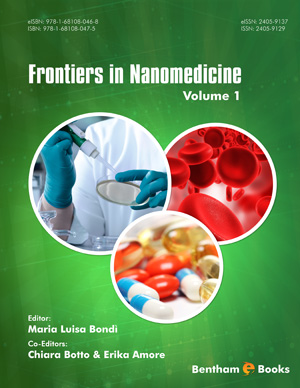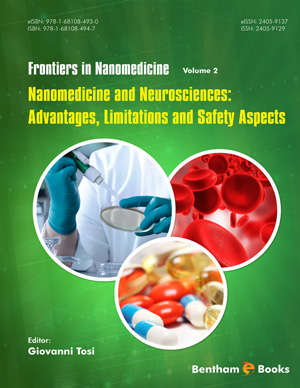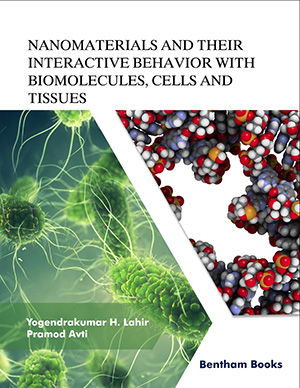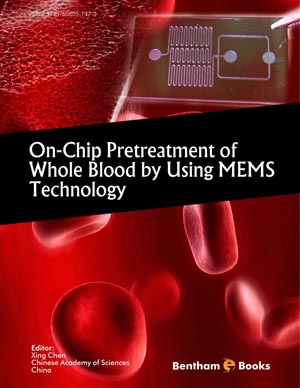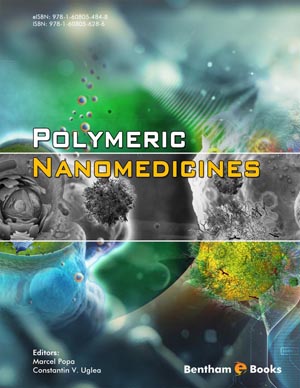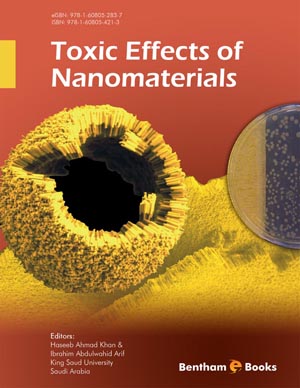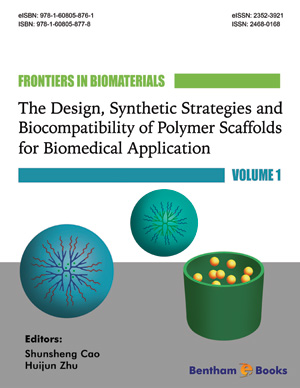Abstract
For medicine, nanotechnology promises new therapies, more rapid and sensitive diagnostic and investigative tools for normal and diseased tissues, and new materials for tissue engineering. This book will highlight the major current uses, new technologies and future perspectives of nanotechnology in relation to medical application. This e-Book will include sections on nanobiological approaches to imaging, diagnosis and treatment of disease, ranging from the medical use of nanomaterials, to nanoelectronic biosensors, and possible future applications of molecular nanotechnology for cell repair. Also covered will be current problems associated with this technology, including an understanding of issues related to toxicity and the environmental impact of nanoscale materials. This e-Book will be of interest to scientists, biomedical technologists, medical doctors and students of taught courses in nanotechnology at both undergraduate and post-graduate level (MSc).
Targeting therapeutic drugs directly at disease sites increases their effectiveness and reduces side effects. Nanoparticles can encapsulate drugs, specific proteins or antibodies and can even be attached to artificial RNA strands known as aptamers. The nanoparticles can be taken up by specific cells where the nanoparticles dissolve to release the protein or drug. This technology could be used to enhance tissue regeneration and remodelling or conversely, destroy diseased tissue such as tumours. The treatment of disease depends on the identification of a target and delivery of a therapeutic agent which either causes function to be restored, switches off inappropriate activity, or in the case of cancer, destroys the cell. However, many pharmaceuticals are limited in their development or application because of poor solubility, poor stability, or side-effects in inappropriate tissues. Manipulating the composition of a drug formulation at the nanoscale can resolve these issues.
Although at an early stage of development, nanoshells can be used to encapsulate drugs, protecting them from the environment and offering targeted release (essential for toxic anti-cancer therapies). Nanoshells can be made from polymers (which fuse with cell membranes and release their contents within the cell) or a mix of polymer and gold (which can be induced to melt when irradiated with infrared light thus releasing their contents). Other nanomaterials can be used to target or directly treat diseased tissues by physical rather than biochemical means. For example, paramagnetic iron nanoparticles can be made to accumulate in tumour cells through the use of magnetic fields and can be used to destroy tumour cells by heat through the application of alternating magnetic fields (known as magnetic fluid hyperthermia [MFH]; In the future functionalising such nanoparticles with targeting biomolecules could enable them to be delivered systemically.
Potential of Nanotechnology in Vascular Imaging and Treatment of Atherosclerosis
Page: 3-9 (7)
Author: Mark Slevin
DOI: 10.2174/978160805131111201010003
PDF Price: $15
Abstract
Activation of vasa vasorum at specific sites in the adventitia initiates their proliferation or “angiogenesis” concomitant with development of atherosclerotic plaques. Haemorrhagic, leaky blood vessels from unstable plaques proliferate abnormally, are of relatively large calibre but are immature neovessels poorly invested with smooth muscle cells and possess structural weaknesses which may contribute to instability of the plaque by facilitation of inflammatory cell infiltration and haemorrhagic complications. Weak neovascular beds in plaque intima as well as activated adventitial blood vessels are potential targets for molecular imaging and targeted drug therapy, however, the majority of potential imaging and therapeutic agents have been unsuccessful because of their limited capacity to reach and remain stably within the target tissue or cells in vivo. Nanoparticle technology together with magnetic resonance imaging has allowed the possibility of imaging of neovessels in coronary or carotid plaques, and infusion of nanoparticle suspensions using infusion catheters or implant based drug delivery represents a novel and potentially much more efficient option for treatment. This review will investigate the possibility of future design of nanoparticles which home to the vasa vasorum and which can release siRNA directed against primary key external mitogens and intracellular signalling molecules in endothelial cells responsible for their activation with a view to inhibition of angiogenesis.
Effective Transvascular Delivery of Chemotherapy into Cancer Cells with Imageable Nanoparticles in the 7 to 10 Nanometer Size Range
Page: 10-24 (15)
Author: Hemant Sarin
DOI: 10.2174/978160805131111201010010
PDF Price: $15
Abstract
The physiologic upper limit of pore size in the blood-tumor barrier of cancer microvasculature is approximately 12 nanometers, independent of whether cancer location is in the brain and the central nervous system, or outside, in peripheral tissues. Chemotherapy drugs in clinical use are less than 1 to 2 nanometers in diameter and can readily extravasate across the blood-tumor barrier to enter the extravascular compartment of cancer tissue. However, these small molecule chemotherapy drugs maintain peak blood concentrations for only a few minutes, and therefore, do not accumulate to high concentrations within individual cancer cells in the extravascular compartment. Spherical nanoparticles in the 7 to 10 nanometer size range maintain peak blood concentrations for several hours and are sufficiently smaller than the 12 nm physiologic upper limit of pore size within the blood-tumor barrier to accumulate to high concentrations within individual cancer cells. The Gd-G5-doxorubicin dendrimer is an imageable nanoparticle bearing chemotherapy within the 7 to 10 nanometer size range. Doxorubicin attachment to the Gd-G5-doxorubicn dendrimer via the pH-sensitive covalent hydrazone bond facilitates efficient intracellular release of doxorubicin and doxorubicin accumulation in cancer cell nuclei. One dose of the Gd-G5-doxorubicin dendrimer is significantly more effective than one dose of free doxorubicin at inhibiting the growth of RG-2 rodent brain cancers for 24 hours. The therapeutic efficacy of the Gd-G5-doxorubicin dendrimer in vivo stems from the effective transvascular delivery of doxorubicin across the blood-tumor barrier into individual brain cancer cells and doxorubicin accumulation to high concentrations within brain cancer cell nuclei. It is foreseeable that such imageable nanoparticles bearing chemotherapy, which are within the 7 to 10 nanometer size range, will also demonstrate therapeutic efficacy in the treatment of cancers located outside the brain and central nervous system.
Nanocrystalline Silver: Use in Wound Care
Page: 25-31 (7)
Author: Valerie Edwards-Jones
DOI: 10.2174/978160805131111201010025
PDF Price: $15
Abstract
The antimicrobial activity of nanocrystalline metals has been shown to be more sustained than normal metal ions. This chapter reviews the use of nanocrystalline silver in wound care and the impact these dressings are having on acute and chronic wounds in terms of healing, toxicity and reduction of biological burden. Production of the nanocrystalline dressings will be described and the antimicrobial mode of action of silver described. The in-vitro and in-vivo assessment of nanocrystalline silver shows these dressings to be advantageous for the health care practioner and an excellent addition to wound care productions.
Nanomedicine and the Treatment of Coronary In-Stent Restenosis - A Clinical Review
Page: 32-42 (11)
Author: Garry McDowell
DOI: 10.2174/978160805131111201010032
PDF Price: $15
Abstract
Coronary in-stent restenosis remains a significant limitation to the long term efficacy of coronary artery stent placement. In this Chapter the author reviews the pathophysiology of coronary instent restenosis, together with an overview of the current treatment modalities. The potential for the use of nanotechnology is also reviewed.
The first human safety trial of systemic nanoparticle paclitaxel (nab-paclitaxel) for in-stent restenosis (SNAPIST-I) is discussed. The results showed no significant adverse advents attributable to the nabpaclitaxel at 10 or 30 mg/m2, although moderate neutropenia, sensory neuropathy and mild to moderate reversible alopecia occurred at higher doses. No major adverse cardiac events were recorded at 2 months, whilst at 6 months 4 target lesions required revascularisation. The investigators concluded therefore that systemic nab-paclitaxel was well tolerated at a dose of less that 70 mg/m2. To date however no formal clinical evaluation has been reported as to the clinical utility of nab-paclitaxel or any of the nano preparations discussed for the suppression of coronary in-stent restenosis.
Applications of Nanotechnology in Imaging and Therapy of Cancer
Page: 43-72 (30)
Author: Xiang-Hong Peng, Debatosh Majumdar and Dong M. Shin
DOI: 10.2174/978160805131111201010043
PDF Price: $15
Abstract
Cancer nanotechnology is a multidisciplinary research area in which science, engineering and medicine embrace each other to actualize the application of nanotechnology in molecular imaging, molecular diagnosis, and targeted therapy of cancer. Nanometer-sized particles such as semiconductor quantum dots, iron oxide nanocrystals and colloidal gold have unique optical, magnetic and physical properties. The surface of these nanoparticles can be conveniently functionalized to conjugate monoclonal antibodies, peptides, aptamers and small molecules, and the resulting nanoscale conjugates can be used for targeted cancer imaging and targeted cancer therapy. Recent advances in nanotechnology have led to the development of various new agents, such as nanoparticles useful for cancer imaging in multiple modalities, and nanoscale theragnostic agents suitable for simultaneous use in cancer diagnosis as well as cancer therapy.
The Nanotoxicological Influence of Nanoparticles, with Special Reference to the Vasculature
Page: 73-84 (12)
Author: May Azzawi
DOI: 10.2174/978160805131111201010073
PDF Price: $15
Abstract
In the last decade, there has been a dramatic increase in the synthesis of engineered nanomaterials for a wide variety of applications. Despite the clear advantages of these applications, especially in medical intervention and therapeutics, the influence of nanoparticle exposure on cellular and organ function remains poorly understood. The nanoscale size of nanoparticles (<100 nm) allows their penetration into cells and, due to their large surface area per unit mass, they are more reactive than larger scale particles. This has led government and scientific organisations to call for a need to assess the safety of engineered nanomaterials and determine the mechanism of their interaction with cells and tissues. Nanotoxicity is now an emerging and expanding discipline that addresses these issues to ensure the well being of living organisms. The results from recent studies in the literature demonstrate that the nanotoxicological influence of nanoparticles is dependent on their size, charge, cell type and material composition. There also remains a number of methodological considerations and the need for precise physicochemical characterisation of nanoparticles before their use in nanotoxicity studies. Recent studies also highlight the need to adequately assess the toxic effects of nanomedicines on all cells and tissues, including the vasculature, using in vitro as well as in vivo studies.
Nanorobots for Endovascular Target Interventions in Future Medical Practice
Page: 85-106 (22)
Author: Sylvain Martel
DOI: 10.2174/978160805131111201010085
PDF Price: $15
Abstract
Medical robotics have evolved from interventions being performed by relatively large robots outside the patient to smaller untethered versions such as the camera pills for operations inside the digestive track. But despite these recent technological advances, many types of medical interventions are still out-of-reach to such modern medical robotic systems. More recently, a new class of untethered robots has emerged. These robots are miniaturized further to target regions in the human body only accessible through smaller diameter blood vessels and as such, they could play a more critical role in many medical applications. Tumor targeting is an obvious example where robotics being applied to miniature untethered carriers capable of transporting drugs can play a major role by offering an improved concentration of therapeutic agents at the targeted area and a decrease of systemic side effects compared to modern interventions such as chemotherapy. But to be successful, such class of robotics must as nanomedicine did, consider nanotechnology to implement critical functionalities aimed at enabling new target therapies or at least to improve many existing medical interventions. This new field of robotics referred here to as medical nanorobotics would therefore achieve such goal by embedding and exploiting nanometer-scale components and phenomena within the context of robotics. In this chapter, the nanoparticles being among the simplest nanometer-scale components to be embedded in such miniature robots will be used as an example to initiate the readers with the powerful concept of nanorobotics and how it can affect future medical practice and in particular, endovascular target interventions.
Role of Nanotechnology in the Diagnosis and Treatment of Alzheimer’s Disease
Page: 107-124 (18)
Author: Kristen M. Jaruszewski, Rajesh S. Omtri and Karunya K. Kandimalla
DOI: 10.2174/978160805131111201010107
PDF Price: $15
Abstract
Nanotechnology has immense potential to revolutionize the treatment and diagnosis of neurodegenerative diseases such as the Alzheimer’s disease (AD). AD is characterized by parenchymal amyloid plaques; intraneuronal tangles; substantial neuronal loss in the cortex and hippocampus; and significant cognitive decline. Treatment in the early stages of the disease is critical to halt or even reverse the neurodegeneration associated with AD. However, none of the diagnostic methods existing today can provide a definitive pre-mortem diagnosis of AD; currently available AD treatments can only offer symptomatic relief but do not address the underlying pathology. Nanotechnology is enhancing the sensitivity and specificity of magnetic resonance imaging and positron emission tomography contrast agents that can detect various pathological hallmarks of AD such as amyloid plaques and neurofibrillary tangles. In addition, nanotechnology enables the targeted delivery of novel therapeutic compounds that are being developed for AD treatment; enhance their efficacy; and reduce systemic toxicity. Some of these notable advances in AD diagnosis and treatment propelled by the nanotechnology are reviewed in this chapter.
Introduction
Nanotechnology promises new medical therapies, more rapid and sensitive diagnostic and investigative tools for normal and diseased tissues, and new materials for tissue engineering. This e-book highlights the major current uses, new technologies and future perspectives of nanotechnology in relation to medical applications. Sections in this e-book include nanobiological approaches to imaging, diagnosis and treatment of disease using targeted monoclonal antibodies and siRNA, the medical use of nanomaterials, to nanoelectronic biosensors, and possible future applications of molecular nanotechnology for cell repair. The book also covers current problems associated with nanotechnology, including an understanding of issues related to toxicity and the environmental impact of nanoscale materials. The book should be of interest to biomedical technologists, medical doctors and students of taught courses in nanotechnology at both undergraduate and post-graduate (MSc) levels.




